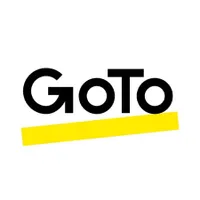Six features you need to look for when choosing a remote IT support platform
Things to look for when selecting a remote support platform

With broadband connections so accessible, remote desktop software has been a popular trend. This is software that can enable a user to run a computer remotely through a client device. In fact, a desktop can be entirely taken over and used remotely, which is called remote administration.
There are different applications of this remote technology, such as a user gaining access to their company desktop while off site. Another useful application is for a remote support platform (RSP) which from a remote location can monitor network health, and also processes to maintain a high level of operational efficiency. This can be useful as the primary IT support in a smaller organization, or to supplement in-house staff in periods of surge at a larger enterprise.
Sounds like your business can benefit from a RSP? It’s definitely worth a close look! Here are six key features to understand and be on the lookout for:
Remote IT Support Software
GoTo Resolve offers a solution for your remote support, management and ticketing needs. Techradar readers can try GoTo Resolve free for 14 days.
1. A dashboard
Any software that is doing monitoring needs a way to indicate that it is up and running, doing its job, and also indicate any issues. The way this gets done is via a dashboard, and it should be real-time so the info gets conveyed instantaneously. In the case of RSP, this ‘Live view’ of the help desk gives administrators a snapshot of such items as the number of help requests pending, the wait time, the number of available reps, and tracking of the number of sessions over time.
2. Integrations
Having different software cooperate together is an important feature to be on the lookout for with an RSP. The goal is to not have the remote software as an island, and rather for it to play nicely with other applications, which is known as integration. Therefore, when choosing an RSP, be on the lookout for the list of software that it integrates with, for example CRM, ITSM, and SIEM.
In general, the longer the list of software that the RSP integrates with, then the more software that it can work with. Also, if there is an important piece of software your business uses, then select an RSP that clearly supports it to avoid issues down the road.
3. Scheduling of tasks
Keeping computers up and running requires maintenance as anyone who has applied the latest patches to Windows on “Patch Tuesday.” The better RSP has the capability for scheduling routine maintenance tasks, a classic, repeatable task that lends itself to automation. Some remote software can even monitor the database to be on the alert for issues, and to be proactive for applying updates.
Sign up to the TechRadar Pro newsletter to get all the top news, opinion, features and guidance your business needs to succeed!
Another task that can be automated with RSP are database backups, a task that everyone appreciates when it is done, but no-one looks forward to performing. However, via RSP, backups can be scheduled. However, RSP takes it a step further as not only can it initiate the backup, but the process can be monitored for successful completion. Taking it a step further, there can be a notification if the backup did not initiate, or also if the backup fails so there is an awareness of the outstanding issue that then needs more hands on intervention.
4. Roles & permissions
Yet an additional feature of RSP is to have control of the roles of different IT professionals as they use the software. Through granular control, users get access via permission settings and policies to the functions that they need to, while keeping them out of areas that they don’t require. Technicians can also have the option to involve higher level support to address the problem successfully.
This is an important feature to have as it allows higher level users a greater amount of access, while appropriately limiting lower level users to the areas that they should be in. Therefore, be sure that your RSP includes this, with multiple roles, and with granular control of the permissions so access to an additional area or two can be added without the requirement for the next level up of access granted.
5. Security
Networks are constantly under attack, with the need to be constantly vigilant. It is really true that every computer network is just a step away from being compromised.
Passwords are a critical component of maintaining network security. However, look for a RSP provider that goes beyond the basic password to offer a more modern approach. In other words, take it a notch up than just the basic user credentials of a username and password. This should include two factor authentication that verifies the user identity via a SMS text, or email. Also, some give the option for a time-based one-time password (TOTP), an increasingly used option that uses the time of day in the password generation algorithm for a higher level of security, and is common with cloud providers.
6. Customization
It is always less preferable to have the RSP be perceived as add-on software that is grafted on top of what is there already. To avoid that issue, a good RSP will offer features that allow it to be customized, so that it feels seamlessly integrated in. This can include the ability to incorporate custom logos in the RSP to provide a consistent user experience.
Taking it a step further are watermarks that can also incorporate brand theming across the RSP to provide a good experience, and also consistent fonts. There can also be the option to design a custom portal that incorporates the company’s logo and colors so users do not feel as though they are leaving the main website when they seek support. You can also have the option to offer end-of-session surveys that then generate feedback on how the RSP is perceived so further improvements can be made as needed.
Conclusion
Choosing an RSP is a much less arduous task once you understand what to look for. With the features assessed for your needs, you can now make a great choice for your business.
We've featured the best Zero Trust Network Access (ZTNA) solutions.
Jonas P. DeMuro is a freelance reviewer covering wireless networking hardware.
